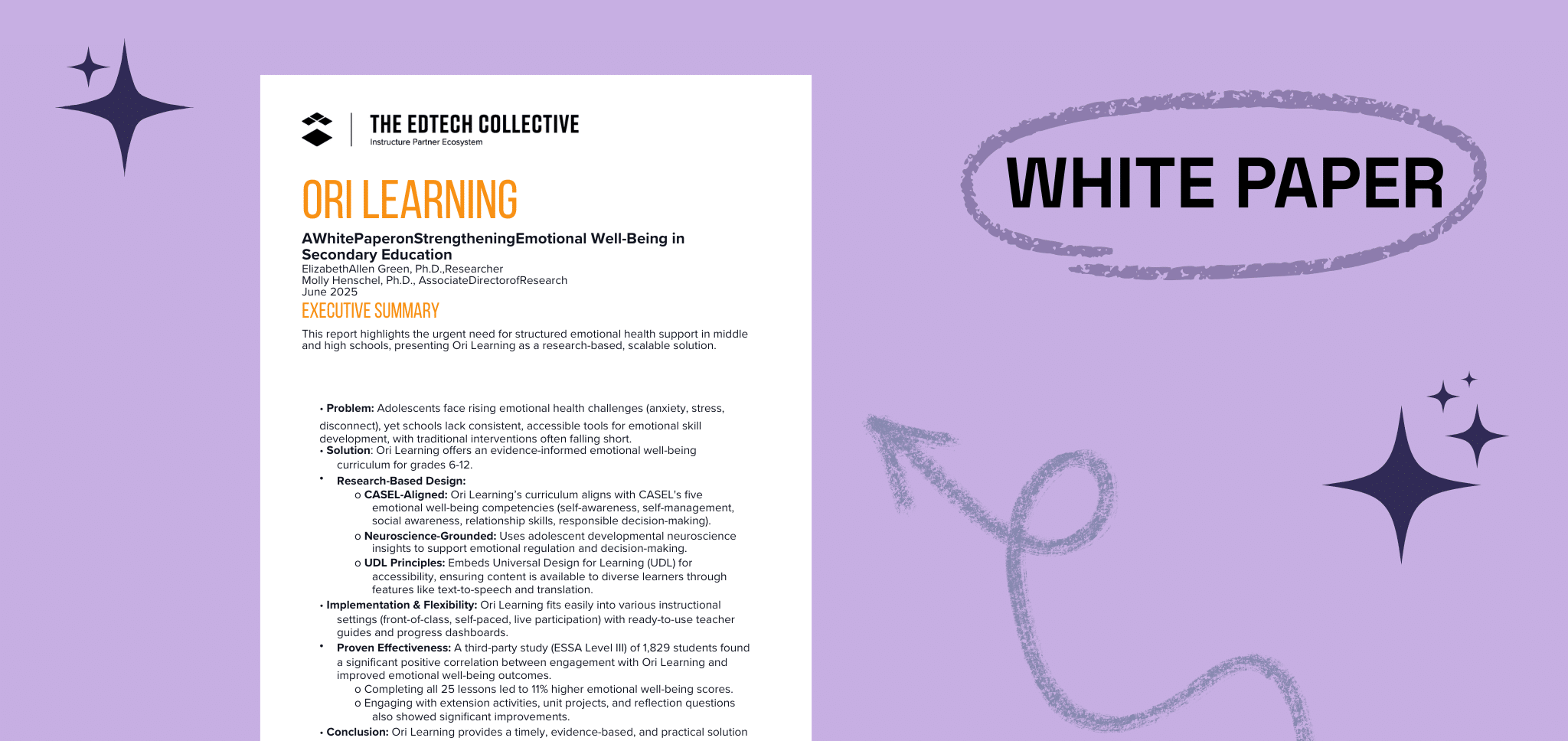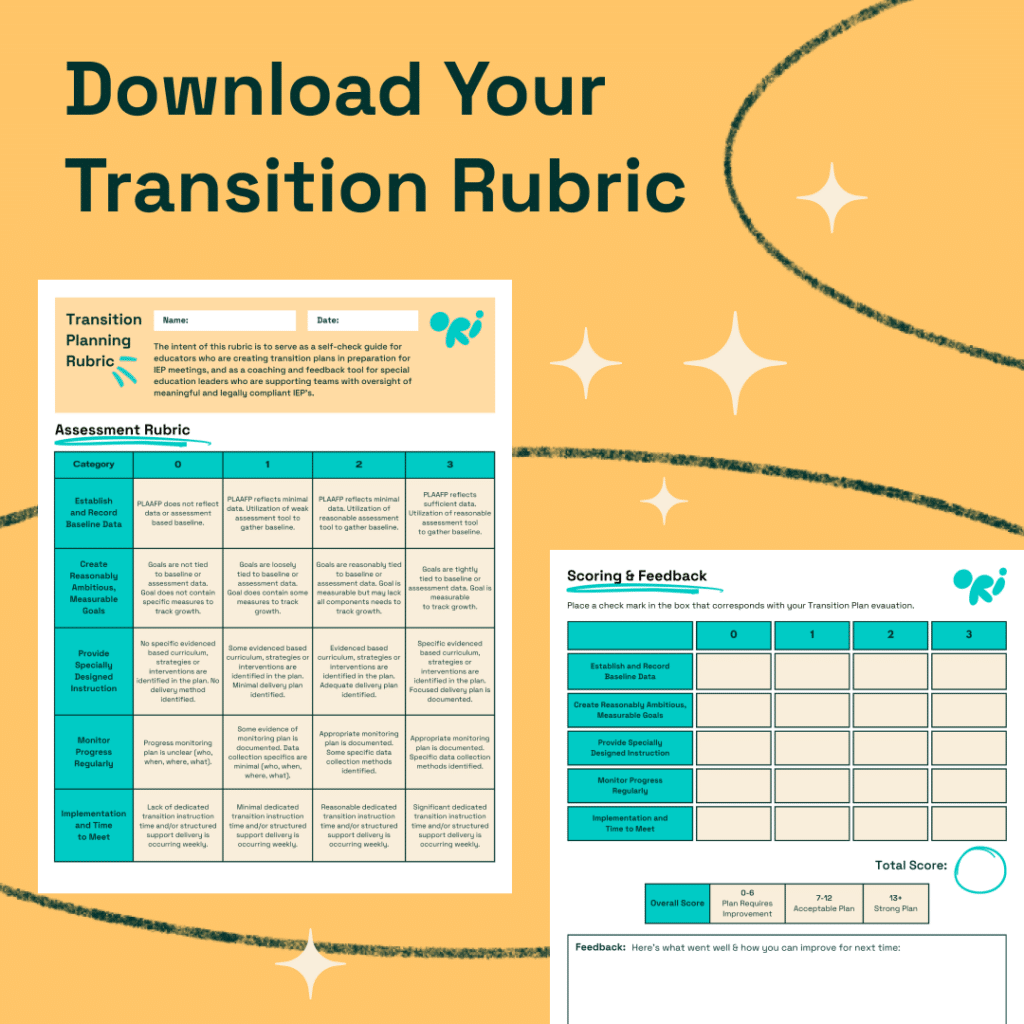

Every student, regardless of their abilities, should have the tools they need to thrive in a learning environment.
For some students with disabilities, achieving their full potential at school might require a 504 plan. This guide discusses 504 plans in schools, equipping you with the knowledge and resources to ensure all students have equal access to success.
In this article, we’ll:
By the end of this guide, you’ll be equipped to support students with disabilities through effectively producing and implementing 504 plans, encouraging a more inclusive and successful learning environment for everyone.
A 504 plan is a personalized roadmap for students with disabilities. It outlines the specific accommodations a student needs to fully participate and learn alongside their peers. These accommodations might include things like extra time on tests, preferential seating, or modified assignments.
504 plans are similar to IDEA in that they both aim to offer free and appropriate education to students with disabilities. However, a 504 plan is available to more students because it doesn’t require that the student’s disability affects their performance for them to be eligible for accommodations.
Students with a physical or mental disability that hinders their ability to learn in the classroom qualify for a 504 plan. This could include conditions like ADHD, dyslexia, certain chronic illnesses, or learning disabilities.
The key is that the disability must “substantially limit” a major life activity, as defined in the Rehabilitation Act of 1973. Learning is the obvious activity in the context of a school setting, but other activities include walking, hearing, seeing, breathing, speaking, caring for one’s self, performing manual tasks, and working.
A 504 plan isn’t a predetermined blueprint that applies to all students. Once a student is identified as a good candidate for the plan, it needs to be developed with that student in mind.
Parents, teachers, and a school team work together to identify a student’s needs, determine appropriate accommodations (support), and set goals. Something important to note is that Section 504 doesn’t require a written plan, but the school must still document the team’s evaluations and accommodations.
Once everything is agreed upon, the plan is documented and implemented. Regular reviews ensure the plan continues to meet the student’s needs.
504 plans are essential for public elementary and secondary schools because they ensure compliance with federal law (Section 504 of the Rehabilitation Act). They allow for a fair and inclusive learning environment, so students with disabilities can access the same educational opportunities as their peers.
Prepare your students for lifelong success with Ori’s Transition Curriculum.
To understand the benefits of 504 plans for schools, imagine a scenario where a student didn’t have access to the accommodations provided by this plan.
A student’s disability could affect their ability to focus in class or cause them to feel overwhelmed by tests or frustrated with assignments they’re unable to grasp. Even if the student’s learning isn’t affected by their disability, they may still face accessibility challenges (which may or may not have a secondhand effect on their education) in their school due to a lack of a personalized 504 plan.
504 plans can be a game-changer for students with disabilities, leading to a ripple effect of positive outcomes including:
Providing students the support they need through accommodations can improve their learning in the classroom. They can focus on understanding concepts, participate more actively, and ultimately retain more information.
This is particularly the case for students whose disabilities directly impair their learning outcomes without the necessary accommodations in place.
With the right support system in place, students with disabilities can overcome challenges and achieve academic success. This can translate into better grades, test scores, and a sense of accomplishment.
A quantitative research paper, The Impact of Section 504 Plans on Academic Achievement, highlighted several studies that observed the academic benefits of implementing a 504 plan. One noted that students with disabilities who received “meaningful accommodations” tended to have higher test scores, grades, and reading skills. Another found that students with disabilities achieved higher test scores when accommodations were provided compared to when they weren’t provided.
Feeling included and capable in the classroom can positively impact a student’s self-esteem and overall well-being. Providing accommodations under 504 plans can reduce frustration and anxiety, leading to a more positive and engaged learner.
These benefits extend beyond the individual student. By working towards an inclusive environment where everyone feels supported, 504 plans contribute to a more positive and productive learning environment for the entire classroom.
Here, you’ll learn the steps required to write an effective 504 plan, from identifying the need for the plan right through to its implementation and beyond.
The planning process begins with an initial meeting.
A teacher, parent, or school psychologist might raise concerns about a student’s ability to participate or learn in the classroom. This could be due to observed difficulties, a recent diagnosis, or perhaps a referral from another professional.
Schedule a meeting with the student’s parents, caregivers, or guardians, along with the student (if appropriate), the teacher(s) who have observed the challenges, and potentially a school psychologist or general education specialist.
In the meeting, discuss the student’s specific challenges and their impact on learning. Gather information about the student’s strengths, weaknesses, and any existing support strategies already in place. This should enable you to determine the student’s eligibility for a 504 plan.
It’s helpful to collect data to support the student’s need for a 504 plan. This could include:
Review the data collected to determine if the student has a disability that substantially limits a major life activity. This can be done by the school team that conducted the initial meeting with the student and their caregivers.
You can now discuss the student’s needs and brainstorm potential accommodations.The outcome of this discussion should be to decide on specific support that will help the student overcome their learning barriers.
Be sure to set clear and measurable goals for the student and establish benchmarks to track the student’s progress.
Document the 504 plan in writing. A Section 504 accommodation plan should include two key items:
Accommodation plans don’t have a required time limit, but it’s helpful to include goals and timelines for review.
It’s also good to include the responsible parties for implementing the plan. Make sure all relevant staff members (teachers, support staff) are aware of the plan and receive any necessary training on implementing the accommodations effectively.
You’re now ready to put the 504 plan into action.
There’s no legal requirement for reviewing and revising a 504 plan; reevaluation only needs to be conducted “periodically” if and when necessary under Section 504. OCR indicates that reevaluations every 3 years, as specified under IDEA, would meet this requirement, but you may prefer to review the plan annually.
The reviewing process allows you to assess the plan’s effectiveness. You may choose to adjust accommodations as needed, and update goals based on the student’s progress.
Continue to collect data on the student’s progress to inform future revisions of the plan, ensuring it remains relevant and continues to support the student’s learning journey.
Our Transition Planning Rubric is designed to support district leaders and educators in guiding their teams towards excellence in transition planning.
It provides comprehensive criteria that cover the breadth of transition planning, from gauging student engagement to evaluating post-secondary goals and services.
Expand your team’s capabilities and improve the success of IEP meetings.

The information provided in this guide should be valuable for both school officials and parents. However, if you’re a parent looking for more information about 504 plans, you may have some specific questions that will be answered in this section.
Here’s a step-by-step approach to get a 504 plan for your child:
Once everyone agrees on the accommodations, a written 504 plan will be developed. Be sure you understand the plan and ask questions if anything is unclear.
The accommodations provided under a 504 plan depend on the barriers identified in the evaluation process.
Possible ways that your child could be supported with accommodations include:
Personalized accommodations will be offered based on the student’s disability. For instance, students on a 504 plan for ADHD are likely to receive accommodations that help them to avoid distraction and give them physical and mental breaks as needed. These can be tailored to work in conjunction with the student’s ADHD-focused IEP goals.
Looking to set your child up for success beyond school? Explore Ori Learning’s ready-to-teach transition curriculum based on UDL and featuring automated progress monitoring towards IEP goals.
No, 504 plans aren’t are not directly mandated by law, but they are a legal requirement in response to a federal law.
Section 504 of the Rehabilitation Act of 1973 prohibits discrimination against individuals with disabilities in any program or activity receiving Federal financial assistance. This includes public schools.
To comply with Section 504, public schools must provide accommodations to students with disabilities who need them to access educational opportunities equally. 504 plans serve as a documented way to ensure these accommodations are implemented.
So, while 504 plans themselves aren’t directly mandated by law, schools are legally obligated to provide equal access to education for students with disabilities. 504 plans serve as a tool to fulfill this obligation.
Hopefully, you’ve now learned everything you wanted to know about 504 plans, whether from the perspective of a school official or a parent.
Remember, collaboration and communication are key to effectively writing a 504 plan and implementing the necessary accommodations.
By joining forces, you can create a successful 504 plan that enables the student to get the most out of their time in education.
In Florida, a 504 plan is a document outlining accommodations a public school should provide to students with disabilities. It ensures these students have equal access to educational opportunities as their peers.
The Florida 504 plan and the Individuals with Disabilities Education Act (IDEA) have essentially the same end goal: to provide free, appropriate public education to students with disabilities. However, the key difference between the two is that a student can only receive education services under IDEA if their disability adversely affects their educational performance, while section 504 doesn’t require a disability to affect the student’s performance for them to be eligible for accommodations.
Examples of accommodations for students with disabilities include allowing extra time for the student to complete an assignment, giving them access to assisted technology, or giving them a quiet space to work.
While 504 plans offer significant benefits, there are a few potential downsides. For school officials, producing the plan can be time-consuming, requiring meetings and documentation. There’s also a chance some may view the plan as a label, and some students might feel singled out. Finally, the plan may not offer the same level of support as an Individualized Education Program (IEP) and isn’t as legally enforceable, which may affect a student’s ability to access the support they need.